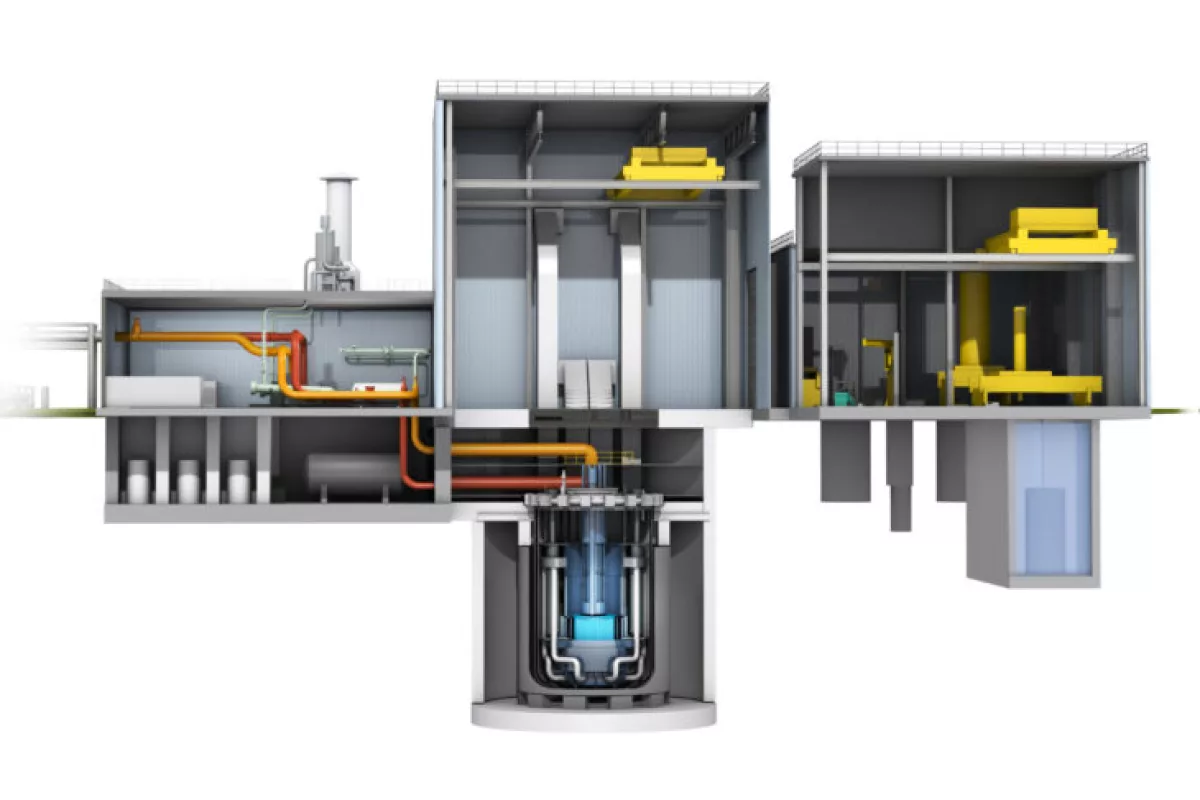Russia is the only country that sells the HALEU fuel that some next-generation nuclear plants will rely on, and with sanctions now in place due to the war in Ukraine, TerraPower has now conceded its demo timeline will blow out by at least two years.
Under a joint venture called Natrium, Bill Gates's TerraPower and GE Hitachi Nuclear Energy are building a commercial-scale demonstrator for a "cost-competitive sodium fast reactor with a molten salt energy storage system" in Wyoming. This plant is designed to output a constant 345 MWe in the form of heat – enough to power around 225,000 homes – but its energy storage can stash up to a gigawatt-hour of bonus energy, which can be released on demand to ramp up output to 500 MWe and firm up the energy grid when renewables are dipping.
Natrium, and other rising next-gen nuclear companies, relies on High Assay, Low Enriched Uranium (HALEU) fuel. This is fuel that's enriched by centrifugal or gas diffusion processes to the point where it's between 5-20% uranium-235 – the isotope that releases energy during a fission reaction. That's considerably more than the 3-5% that current nuclear reactors run on, but it's key to the increased fuel efficiency, reduced waste, longer-life cores, smaller, safer designs and at the end of it all, lower energy costs that next-gen nuclear hopes to bring to the market.

Unfortunately, the only commercial source of this HALEU stuff at the moment is Russia. And while the US Government has put plans in place to develop a domestic supply chain, TerraPower President and CEO Chris Levesque has sent out a newsletter update to say the fuel's not going to be there ready for Natrium's planned 2028 entry into service.
"TerraPower, alongside DOE, Congressional allies, and project stakeholders, have aggressively explored potential alternative sources for HALEU," writes Levesque, "and while we are working now with Congress to urge the inclusion of $2.1 billion to support HALEU in the end of year government funding package, it has become clear that domestic and allied HALEU manufacturing options will not reach commercial capacity in time to meet the proposed 2028 in-service date for the Natrium demonstration plant."
"We will be able to fully update our schedule in 2023," he continues, "once we know the results of the Fuel Availability Program’s request for proposals, the availability of DOE material for downblending into HALEU and the additional action currently being contemplated by Congress. But given the lack of fuel availability now, and that there has been no construction started on new fuel enrichment facilities, TerraPower is anticipating a minimum of a two-year delay to being able to bring the Natrium reactor into operation."

The company will continue construction work on the plant as scheduled, and expects to get the thing built. It's also going to press ahead on another project with PacifiCorp that would put another five Natrium reactors into commercial service by 2035.
"This work will continue," states Levesque. "We are confident the federal programs to catalyze the production of HALEU will be operational in a timeframe that works for these plants."
Hopefully it's just a small and very temporary setback; decarbonization demands an unprecedented ramp-up of zero-carbon energy sources, and advanced nuclear will be a key part of that effort. Check out a video below.
Source: TerraPower






